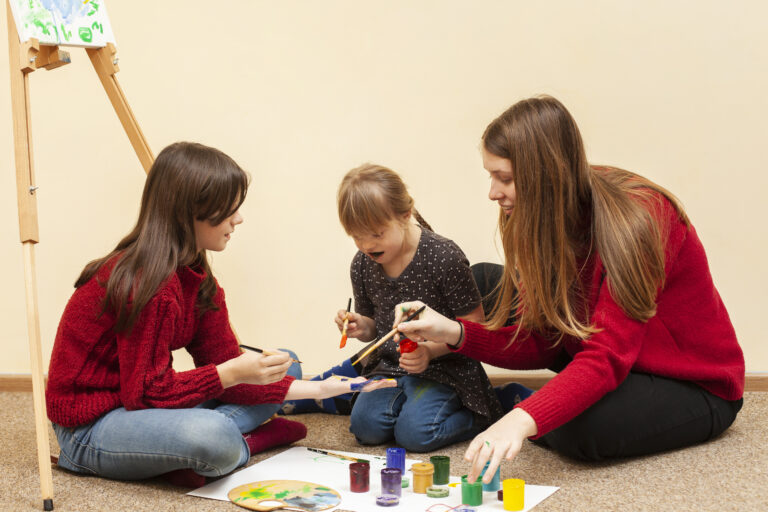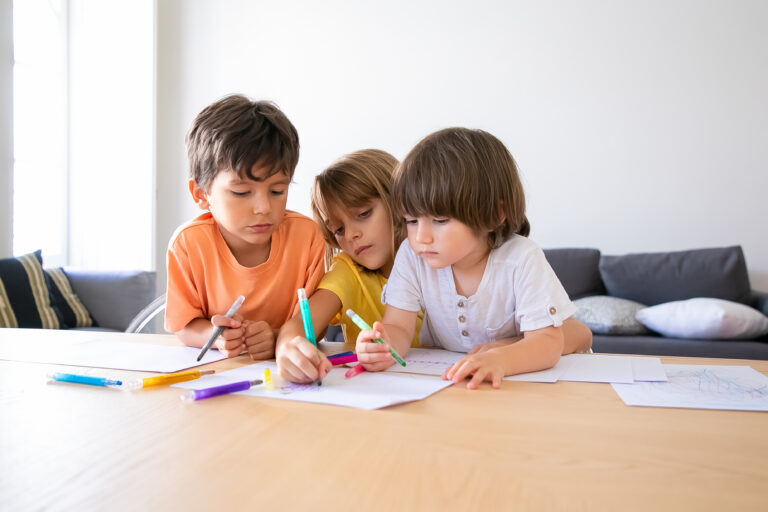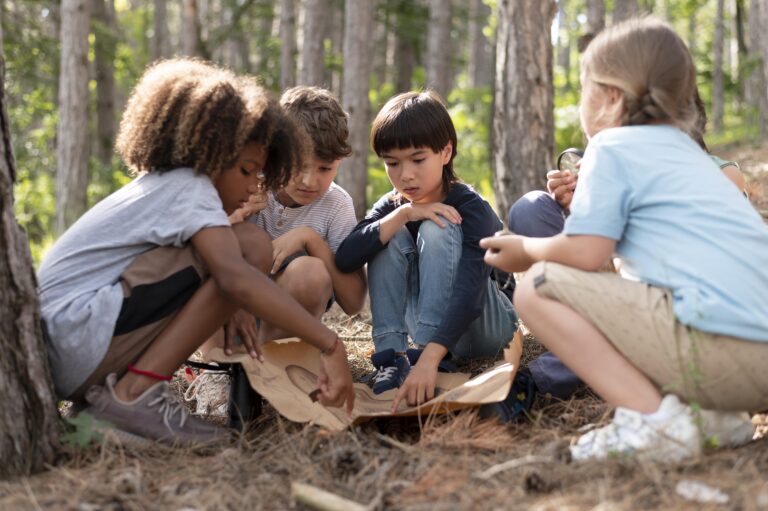Preparing Students with Special Needs for Summer Break
As summer approaches, many students buzz with excitement at the thought of sunny days, time with family, and a break from classroom routines. However, for students with special needs, particularly those with autism, the transition to summer break can also be a source of deep anxiety and uncertainty. Anticipating these changes, autism-focused schools play a crucial role in helping students prepare for the end of the school year by providing meaningful supports and structured activities that ease anxiety, build resilience, and maintain emotional regulation.
In this comprehensive post, we will explore the important role that visual schedules, social stories, and gradual changes to routines play in helping students with special needs navigate the transition to summer. We will also discuss practical strategies that educators, therapists, and families can use collaboratively to support children through this significant shift, ensuring they feel confident, understood, and equipped for a healthy, joyful summer.
Understanding the Challenges of Summer Break for Students with Special Needs
Change, even when positive, can be difficult for students with special needs. Many autistic children, especially, thrive on structure and predictability—clear routines reduce stress and allow them to focus on learning and socializing. The end of the school year disrupts established rhythms: familiar faces vanish, daily routines vanish, and a sense of continuity can be lost.
For these students:
- Loss of structure may mean more unstructured time, which can feel overwhelming.
- Increased unpredictability around vacations, new caregivers, or different settings introduces stress.
- Sensory differences may be heightened with changes in environment or schedule.
- Emotional regulation may become more difficult without built-in school supports and routines.
However, with proactive planning, these challenges can become opportunities for growth and positive anticipation, not just sources of anxiety.
Why Transition Supports Matter
The key to preparing for any transition, especially summer break, is predictability. When students know what is coming, and have familiar tools and stories to make sense of their changing world, they can approach the unknown with greater resilience. Thoughtful transition supports not only ease anxiety but also:
- Promote self-regulation and coping skills
- Reduce behavioral challenges
- Foster independence and flexibility
- Maintain progress in communication and social skills
- Build trust between students, families, and schools
The ultimate goal is for each child to feel safe, empowered, and understood as they step into the summer months.
Visual Schedules: Making the Invisible, Visible
Visual schedules are a cornerstone of autism support, and their importance becomes especially clear during transitions. By creating a visual “roadmap” of upcoming events and changes, students can anticipate what’s next and prepare mentally and emotionally.
The Power of Visual Schedules
A visual schedule typically uses images, symbols, or written words to break down the day’s (or week’s) activities into manageable chunks. For the transition to summer, these schedules can begin weeks in advance and include:
- Last day of school countdowns
- Markers for special events (field day, graduation)
- Photos of summer camps, therapy sessions, or family trips
- Color-coded icons to distinguish between school days, home days, and new activities
Visual schedules address the need to know—they answer questions before anxiety has a chance to grow. This isn’t only for nonverbal students; many highly verbal children also find comfort in seeing change rather than just hearing about it.
Customizing Schedules for Summer
Each child is unique, and so too should their schedule be. Some families use dry-erase boards at home, while others rely on phone or tablet apps. Teachers might send home portable schedule strips or create a picture notebook describing key summer events. What matters most is consistency—referencing the schedule regularly, updating it as new information arises, and allowing the child to check off items or move a marker as time passes.
Social Stories: Preparing for the Unknown
Social stories offer children with special needs a script for navigating expected (and unexpected) changes. Crafted in clear, reassuring language, social stories address the who, what, where, when, and why of a transition like summer break.
How Social Stories Work
A typical social story introducing summer break might say:
“In two weeks, school will be over for summer. This means I will not come to school every day. I may stay home, go to camp, or play outside. Some days, I might miss my teachers and friends, but that is okay. There will be new routines. Grownups will help me learn what to do.”
Through repetition and gentle rehearsal, social stories help students:
- Anticipate changes in routine or location
- Prepare for different sensory or social demands
- Practice strategies for emotional regulation if they feel overwhelmed
- Understand that missing school or feeling nervous is normal and manageable
- Reassure themselves that support will still be available
Making Social Stories Meaningful
To maximize impact, social stories should be tailored to each child, using familiar photos, names, and concrete examples. They should be read regularly—daily if possible—leading up to the summer, and referenced again if new routines or surprises emerge.
Educators and families can collaborate to update stories as plans evolve. If a summer camp is planned, including photos of the building, counselors, or typical daily activities will help bridge the gap between the comfort of school and the novelty of summer.
Gradual Routine Shifts: Smoothing the Path
Abrupt change often leads to stress. By slowly introducing aspects of the summer routine before the break begins, educators support students in building flexibility and resilience gradually, rather than all at once.
Practical Examples of Gradual Transition
Starting several weeks before school ends, staff might:
- Shift daily activities to resemble more of the unstructured times students will experience in summer (e.g., more play, less academic seatwork).
- Practice what a home day or “summer day” will look like, including changes in eating, nap, or activity times.
- Have students help plan or organize “mini-summer camps” at school, simulating what they’ll encounter in different settings.
- Introduce and practice using ‘calm down’ corners, portable sensory tools, or alternative ways to ask for help—ensuring students can use these same supports outside school.
- Create role-play sessions or game-based learning where students act out or narrate their ideal summer day.
This gradual pace reduces shock and teaches students how to cope with ambiguity, reinforcing the strategies they’ll use over break.
Maintaining Emotional Regulation: Tools for Home and Beyond
A successful summer transition isn’t only about preparing for change, but also about ensuring students have the tools to manage big feelings when routines are interrupted. Schools can help by sending home “toolkits” for families, which might include:
- Social stories in a take-home binder
- Portable visual schedules or checklists
- Fidget toys, stress balls, or weighted lap pads for sensory regulation
- Emotion cards or a communication device pre-programmed with phrases like “I miss school” or “I feel worried.”
- A list of preferred calming or coping strategies—deep breaths, drawing, music, or quiet time
- Contact info for support staff, in case of urgent questions or difficulties
Teachers can also work directly with families to identify what has helped the child during past changes and brainstorm how to replicate that success in the summer context.
The Role of Group Activities in Promoting Social and Emotional Resilience
The last weeks of school shouldn’t just be about saying goodbye. They’re a crucial time to build up social connections, independence, and a sense of celebration. Autism-focused schools can offer:
- End-of-year group projects or games centered around teamwork and shared joy.
- Group storytelling opportunities about summer adventures, helping students envision positive new experiences.
- Routine check-ins where students can name and discuss their feelings about the transition, knowing that peers may share similar worries or excitement.
Even a simple ritual, like creating a “Summer Adventure Book” as a class—with each child contributing ideas or drawings of what they hope for in the summer—can transform anxiety into anticipation and maintain a sense of connection even after the classroom closes its doors.
Fostering Collaboration Between School and Home
The most successful summer transitions happen when families and schools work together. Communication is key. Teachers and therapists can:
- Meet with families before break to discuss upcoming changes, offer personalized recommendations, and learn about each student’s summer plans.
- Provide written summaries of what’s worked well for the student during the school year, so families can refer to these insights when challenges arise at home.
- Encourage parents or caregivers to establish rituals, like weekly family meetings or visual check-ins (“Today is Monday. Here is what we’ll do…”).
- Create a sense of continuity by sending a favorite item, class photo, or certificate home, so students still feel connected to their school “family.”
A sense of partnership increases confidence for the child and helps adults on both sides feel supported in their roles.
Supporting Students Who Experience Summer School or Camps
Not all students stay home during summer; many attend extended-year programs or specialized camps. Transitions can still be difficult if the setting, staff, or peer group changes.
Visual tools and social stories should be adapted to this new context:
- Introduce key staff, routines, and environments ahead of time through photos or video tours.
- Preview sensory differences—new sounds, smells, or textures students might encounter.
- Explain new rules or expectations clearly and positively (e.g., “At camp, we wear hats outside.”)
- Reassure students regularly that their feelings are normal, and that it’s okay to ask for breaks, help, or comforting items.
- Encourage continued use of regulation tools and self-advocacy skills fostered at school.
This preparation reduces anxiety and increases the odds of a positive, fulfilling summer experience.
Creating Opportunities for Growth During Summer
With thoughtful scaffolding, summer can be a time of incredible growth for students with special needs. Families and caregivers can seize the opportunity to:
- Explore new interests in a low-pressure environment
- Build independence with daily living skills (preparing snacks, organizing activities)
- Practice social skills with siblings, cousins, or neighbors in playdates or park visits
- Reinforce school-learned communication tools in everyday routines
- Reflect on successes and challenges to prepare for the transition back to school in the fall
By maintaining elements of routine, predictability, and support, summer becomes a laboratory for new experiences—not a pause in development.
Embracing Positivity: Reframing Summer for Every Student
It’s important to remember that transitions are not always negative. With the right preparation, summer can become something students anticipate rather than dread. Classrooms can create “countdown calendars” with positive affirmations for each day. Social stories can highlight all the fun things summer brings, rather than just focusing on what will be missed. Educators can frame changes as temporary and emphasize that the classroom community will reunite in the fall, building a sense of cyclical comfort.
When adults project optimism and validate all feelings—nervousness and excitement alike—students pick up on that emotional tone and learn to approach change as part of life’s adventure, rather than as something to fear.
Supporting the Return to School in the Fall
Preparation for a smooth summer can also set the stage for a successful return in September. By documenting successes (a photo of a happy beach trip, a list of favorite new activities), families and students can create “memory stories” to share with teachers. This allows educators to tap into the student’s growth and experiences, make connections to the curriculum, and fine-tune social stories or schedules for the next transition.
Schools can send out “welcome back” social stories or preview materials in August to reignite positive anticipation, close the loop, and set everyone up for a joyful reunion.
Final Reflections
Preparing students with special needs for summer break is not just about ending one chapter; it’s about confidently opening the next. When autism-focused schools use visual schedules, social stories, and gradual routine shifts, they empower students to face change with an open heart and grounded resilience. These strategies offer comfort, foster independence, and ensure that every child retains a sense of belonging, whether at home, camp, or on new adventures.
A thoughtful, collaborative approach to transition planning doesn’t just benefit students—it supports families, strengthens school communities, and reinforces the core value of inclusion. As summer approaches year after year, let’s choose preparation over panic, partnership over isolation, and optimism over fear. At our school for autism in Farmers Branch, we embrace this philosophy to ensure every student transitions with confidence, clarity, and the support they deserve.
In doing so, we help our students not only endure transitions but embrace them—with courage, curiosity, and joy.






